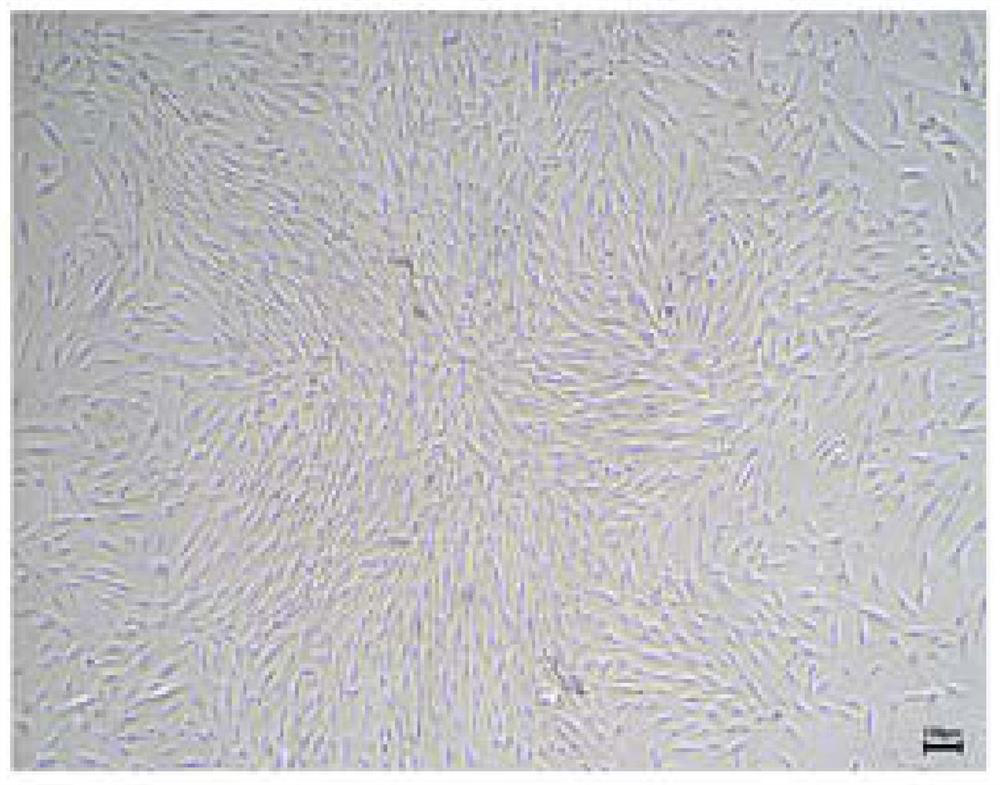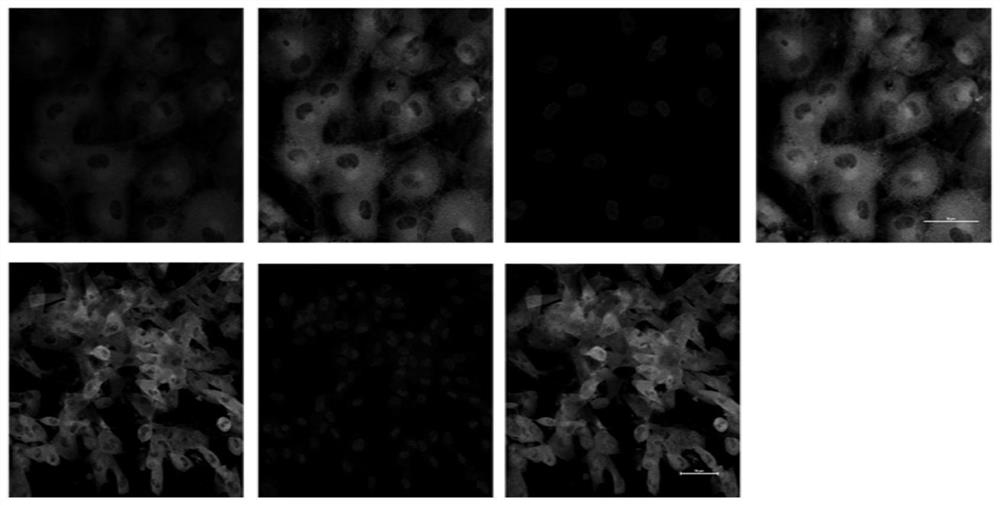Method for reprogramming umbilical cord mesenchymal stem cells into liver cells and prepared liver organoids
A technology of liver cells and stem cells, applied in the field of liver organoids, can solve problems such as little effect, and achieve the effects of increased albumin expression, easy preparation, and improved induction efficiency
- Summary
- Abstract
- Description
- Claims
- Application Information
AI Technical Summary
Problems solved by technology
Method used
Image
Examples
Embodiment 1
[0047] Method for reprogramming umbilical cord mesenchymal stem cells into liver cells
[0048] Umbilical cord is derived from human beings, but it is usually treated as medical waste. Its sources are extensive and do not involve ethical issues. It is a superior tissue source for obtaining a large number of mesenchymal stem cells in clinical and research. Umbilical cord mesenchymal stem cells (UC-MSCs) have strong proliferative activity and have been used in the treatment of various diseases.
[0049] In this application, UC-MSCs were cultured to 6 points under serum-free conditions, that is, UC-MSCs were cultured in vitro until entering the logarithmic growth phase, such as figure 1 As shown, when UC-MSCs were cultured in vitro to the third passage, their morphology was uniform and they grew in the shape of a long spindle-shaped womb. Subsequent identification of cell surface markers and differentiation ability of UC-MSCs confirmed that the extracted UC-MSCs were in line with...
Embodiment 2
[0061] Liver organoid and preparation method thereof
[0062] Organoids are three-dimensional cell cultures that contain some of the key properties of their representative organs. Organoids are also an in vitro culture system that includes a self-renewing stem cell population that can differentiate into multiple organ-specific cell types, has a similar spatial organization to the corresponding organ and can reproduce some of the functions of the corresponding organ, thereby providing a Highly physiologically relevant system. Organoid cultures have been used in a variety of tissues, including gut, liver, pancreas, kidney, prostate, lung, optic cup, and brain. Organoids are also a tool with applications in developmental biology, disease pathology, cell biology, mechanisms of regeneration, precision medicine, and drug toxicity and efficacy testing, among others. For these applications and others, organoid culture provides a highly informative complement to existing two-dimensio...
PUM
 Login to View More
Login to View More Abstract
Description
Claims
Application Information
 Login to View More
Login to View More - R&D
- Intellectual Property
- Life Sciences
- Materials
- Tech Scout
- Unparalleled Data Quality
- Higher Quality Content
- 60% Fewer Hallucinations
Browse by: Latest US Patents, China's latest patents, Technical Efficacy Thesaurus, Application Domain, Technology Topic, Popular Technical Reports.
© 2025 PatSnap. All rights reserved.Legal|Privacy policy|Modern Slavery Act Transparency Statement|Sitemap|About US| Contact US: help@patsnap.com



